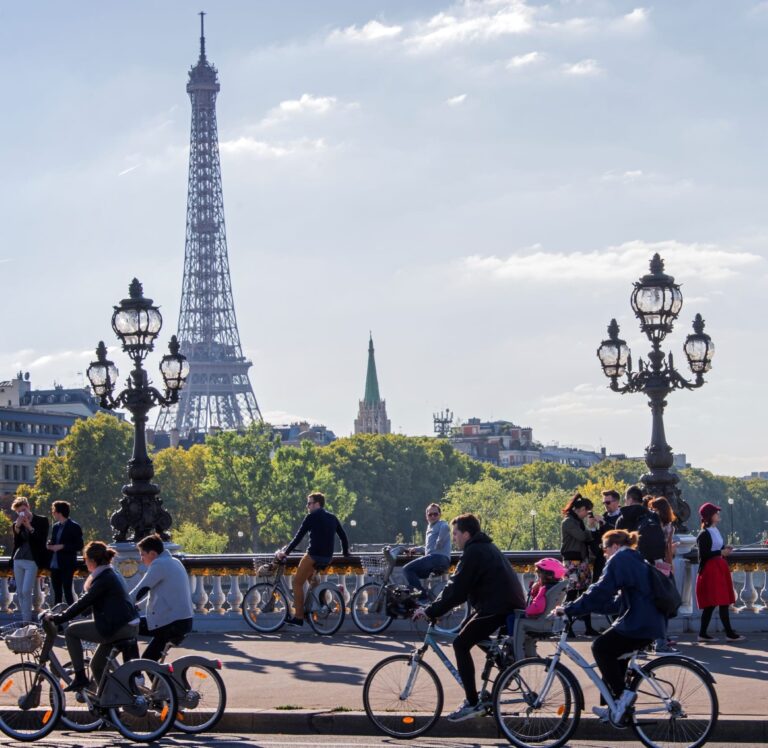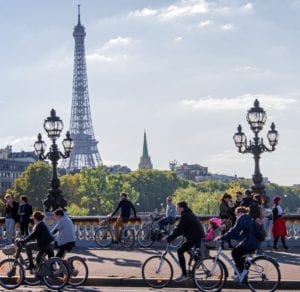The Mayor of Paris has announced plans to transform the city’s streets where all roads in the French capital are cycle friendly by 2024.
Anne Hidalgo’s traffic plan will be implemented to promote walking, cycling and public transport in order to fulfil her commitment of carrying out an “ecological transformation of the city”.
Details include:
– At least one cycle route will be created in each borough: a street where pedestrians and bikes have priority over motor vehicles
– Two-way cycling will be generalised in zone 30
– All bridges will be equipped with secure cycle paths
– The green thread, a network of planted lanes, will be reserved for pedestrians and bikes to connect Paris to neighbouring municipalities
– The Olympic cycle loops will link the Olympic sites and the territories
– The realisation of the Vélopolitain and the RER V – a new network of major cycle routes – in addition to the 1,000km (620 miles) that already exist
– Apply and enforce a Street Code, which gives priority to the most vulnerable, pedestrians and cyclists
– Regulate the access of heavy goods vehicles that are not equipped with an anti-blind spot devices
– Multiply prevention campaigns and controls for compliance with the rules
– Learn to cycle from school – multiply school bikes to promote learning for all audiences and create spaces dedicated to learning to cycle
– Install Véloboîtes for secure residential parking of bikes, equipped with pumping station and repair tools in free access
– Install secure Vélostations in 15 Parisian stations (seven large stations and eight intermodality nodes including RER stations suchas Nation and Porte Dauphine) to promote train / RER / metro and bike intermodality
– Offer a multi-park bike pass giving access to the 100 underground car parks in the city’s concession and to the car parks of the city’s social landlords
– Support the creation of secure bicycle shelters wherever possible, in condominiums, social housing buildings and in corporate buildings
– Investments for bicycles will reportedly be increased to €26 (£22) per inhabitant per year – a total of €350m (£297m) in six years.
Hidalgo’s plans also include the removal of 72% of on-street car parking spaces to make more room for cyclists.
According to a 2019 study by Atelier Parisien d’Urbanisme, there are currently 83,500 on-street parking spaces, which means Hidalgo plans to remove approximately 60,000 of them.
Another detail in the plan is the concept of creating a ‘city of 15 minutes’ in which ‘hyper proximity’ will give residents nearby access to essential living needs, replacing the construction of new shopping centres, for example.
Alongside this, Hidalgo has also included plans for an expansion of green spaces, vegetable plots and playgrounds to take precedence over car parking spaces.
 Want to learn more about how cycling will play a part in the future of urban transportation? CiTTi Exhibition takes place on the 3rd and 4th of June at Coventry’s Ricoh Arena. Register your interest to attend at www.cittiexhibition.co.uk
Want to learn more about how cycling will play a part in the future of urban transportation? CiTTi Exhibition takes place on the 3rd and 4th of June at Coventry’s Ricoh Arena. Register your interest to attend at www.cittiexhibition.co.uk






